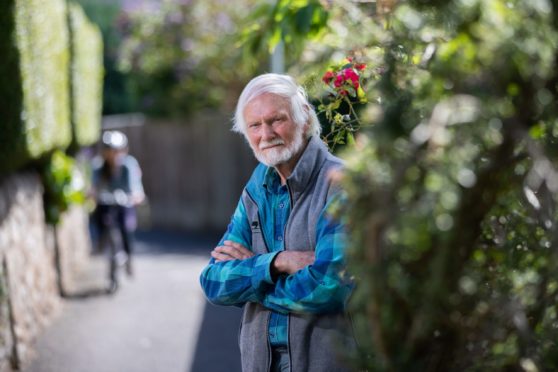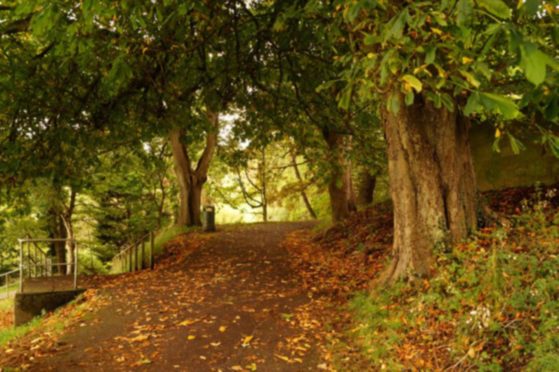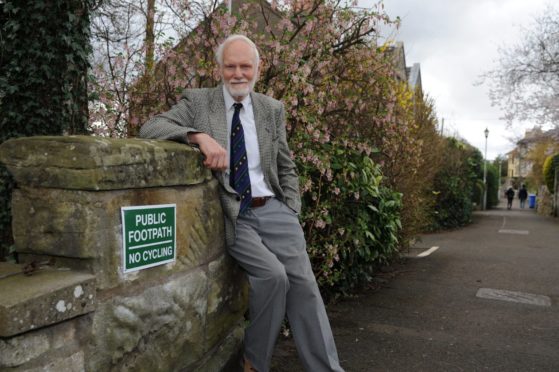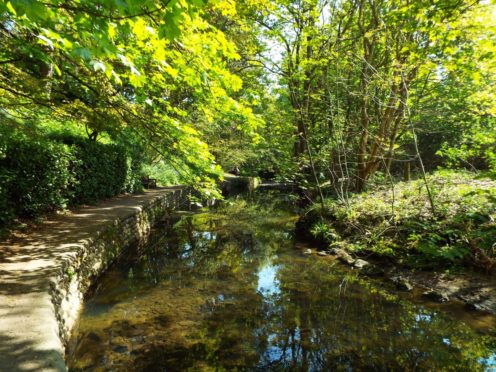Councillors have approved an upgrade to a popular walking route through St Andrews, despite fears it will turn it into “a multi-track highway”.
Residents worry that work to widen and resurface the Lade Braes through the heart of the town will attract speeding cyclists.
And they fear pedestrians, including pilgrims en route to the town’s cathedral, will be injured if they are hit by a bike.
The Lade Braes was originally a 12th century watercourse that fed the Augustinian Priory in the grounds of St Andrews Cathedral.
It was used to flush the monastic latrines and powered the priory mill.
However, it is now a part of the Fife Pilgrim Way, which follows one of the routes taken by countless medieval pilgrims making their way to Scotland’s holy spot.
It is also very popular with both locals and visitors to St Andrews.
‘Overwhelmed by cyclists’
Fife Council says an upgrade is essential due to erosion, uneven surfaces and areas of flooding.
The plan is to widen the path, lay a gravel surface and put in benches and solar lights.
It also wants to remove “restrictive” barriers to make it more accessible to people with wheelchairs and buggies.
We don’t want it overwhelmed by cyclists.”
David Middleton.
The council has agreed to introduce safety measures to protect pedestrians.
But David Middleton, chairman of the Confederation of St Andrews Residents’ Associations (CSARA), said the upgrade would still attract more cyclists who would be able to travel at speed.
Mr Middleton once put up his own no cycling signs outside his home in Lade Braes Walk after an elderly neighbour was struck by a bike.
But they were declared illegal and were promptly removed by council officers.
Despite this, he says he is not anti-cycling. He just thinks the Lade Braes is the wrong place to do it.
“I’m not against cycling but if we introduce cyclists to the Lade Braes it will make it dangerous,” he said.
“It’s part of the Pilgrim Way and we don’t want it overwhelmed by cyclists.”
He fears the path is too narrow to be shared by walkers and bicycles and predicts it’s only a matter of time before a pedestrian is injured.
Meanwhile, St Andrews Community Council says the work will introduce additional hazards.
“Whilst maintenance is welcome, it is less so when it would turn it into a multi-track highway where walkers cannot be allowed a small section free from bicycles etc, as was the initial intention of the walk,” they said.
Lade Braes is already used by cyclists
The upgrade will take place over the entire mile-long path, most of which does not need planning permission
However, consent was required for a small section of the route which runs through a conservation area.
Planning officer Mark Dunlop said: “In this instance there is no material change of use of the land in planning terms.”
He said there was nothing to stop cyclists using the path at present and widening it would make it safer.
He noted the concerns but added: “The planning system cannot be held accountable for the actions or behaviours of users.”
It’s effectively an issue of safety and cyclists going a bit too fast.”
David Middleton.
Planner Derek Simpson added: “It’s important to note there are currently no restrictions on how the path is used. Cyclists can use it at the moment.
“The intention is to make the path more accessible for all users and improve disabled access.”
Conservative councillor Tony Miklinski proposed a compromise which was accepted by members of the north east planning committee.
That was to agree to the upgrade but to add a condition stating that effective measures to limit the speed of cyclists must be added at appropriate locations to protect pedestrian safety.
Mr Middleton declared the condition “better than nothing”.
But he added: “I’m concerned it may not have teeth because it falls to the officers to wrote the report in the first place to decide what goes in.
“It’s effectively an issue of safety and cyclists going a bit too fast.”



